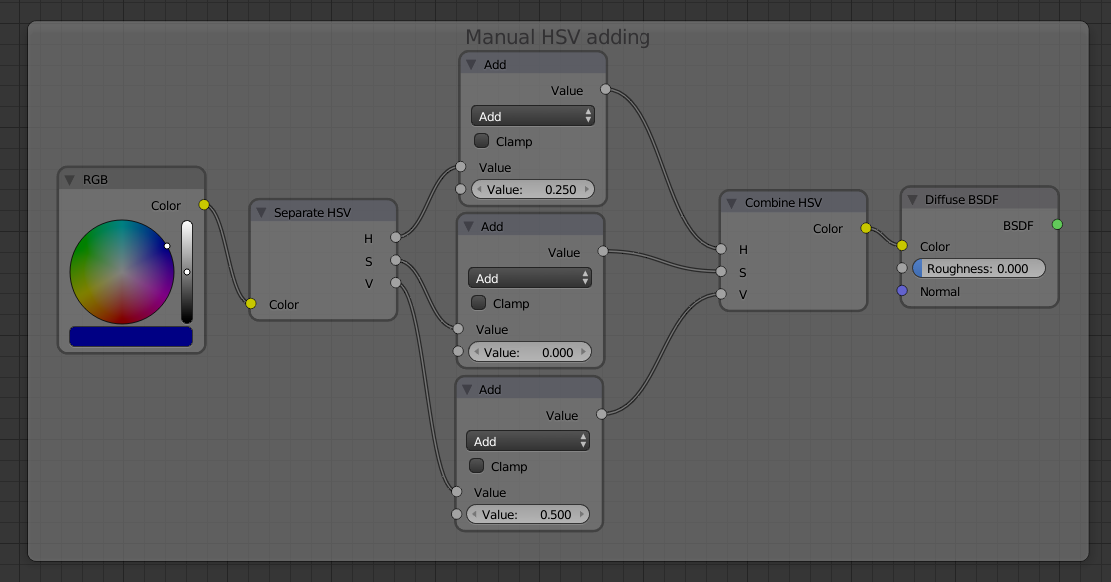I'm new to Blender and currently digging into the nodes system, trying to figure out what all of those nodes actually do (aside from the information one is given in various YT-tutorials).
I came across a very strange behaviour of HSV values when it comes to Separating/Adding/Combining.
It's all about Pink:
- RGB: 1 0 0.212
- HSV: 0.917 1 1
I ) I can set up this pink just in a diffuse shader inputting RGB and/or HSV values.
II) I also get to this pink by mixing blue and red using "Add Shader" or using "Mix RGB - Add)
Blue:
- RGB: 0.000 0.000 0.214
- HSV: 0.667 1.000 0.500
Red:
- RGB: 1.000 0.000 0.000
- HSV: 0.000 1.000 1.000
(Results are 100% conform with same Photoshop blending mode)
III) I also get to this pink by manually adding values in the RGB system:
RGB color values
- R: 0 + 1 = 1
- G: 0 + 0 = 0
- B: 0.214 - 0.002 = 0.212
IV) BUT: Manual adding of values does not work within the HSV-System!
HSV color values
- H: 0.667 + 0.250 = 0.917
- S: 1 + 0 = 1
- V: 0.5 + 0.5 = 1
The outcome should be the same Pink but IT IS NOT! It's almost the same but a little darker.


